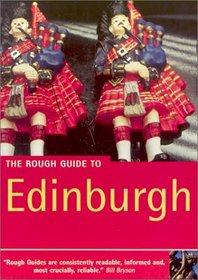Search -
The Rough Guide to Edinburgh (3rd edition)
The Rough Guide to Edinburgh - 3rd edition
Author:
INTRODUCTION Perched on a series of extinct volcanoes and rocky crags, EDINBURGH enjoys a dramatic natural setting unrivalled by any other major European city. Arrive in the very heart of town – either by day, with an east wind tugging at the flags that seem to fly from every building, or by night, when floodlights float grand architecture... more »
Author:
INTRODUCTION Perched on a series of extinct volcanoes and rocky crags, EDINBURGH enjoys a dramatic natural setting unrivalled by any other major European city. Arrive in the very heart of town – either by day, with an east wind tugging at the flags that seem to fly from every building, or by night, when floodlights float grand architecture... more »
ISBN-13: 9781858288871
ISBN-10: 1858288878
Publication Date: 8/26/2002
Pages: 352
Rating: 1
ISBN-10: 1858288878
Publication Date: 8/26/2002
Pages: 352
Rating: 1
3.5 stars, based on 1 rating
Genres:
- Travel >> Europe >> Great Britain >> General
- Travel >> Europe >> Great Britain >> Scotland >> Edinburgh




